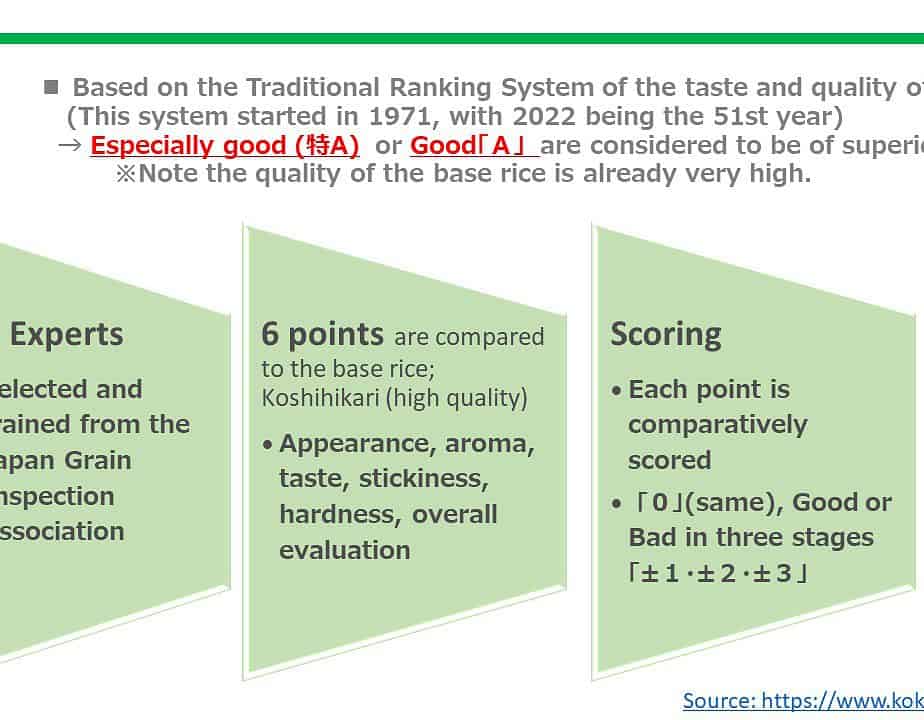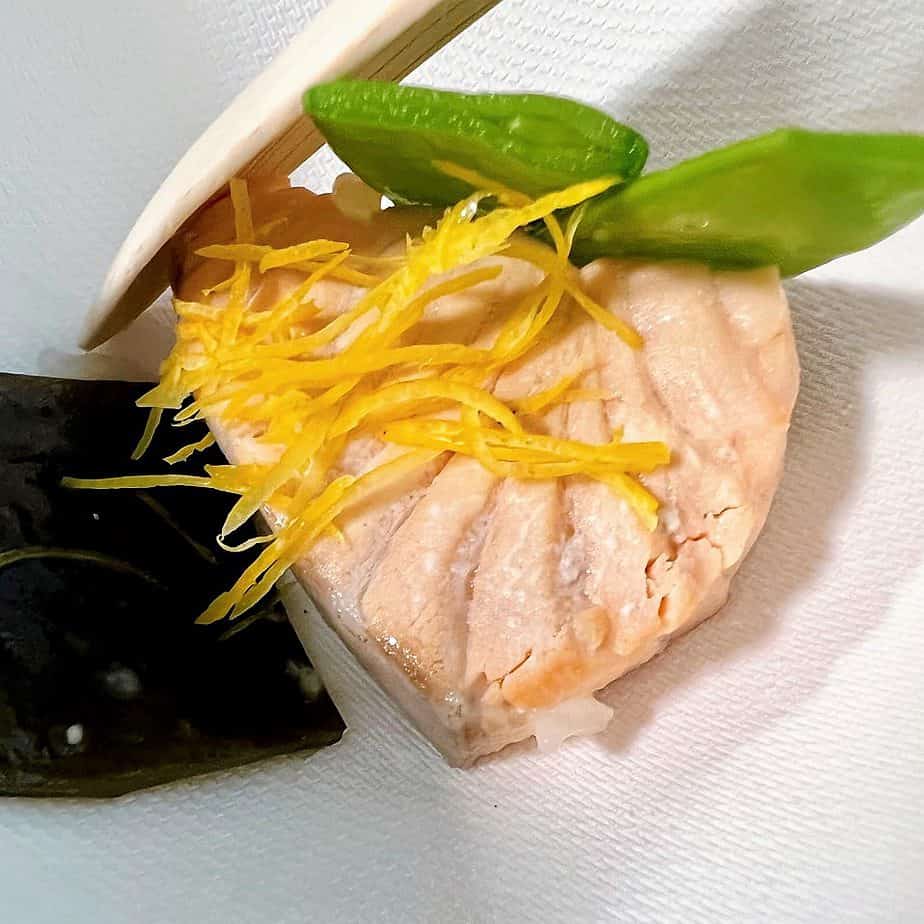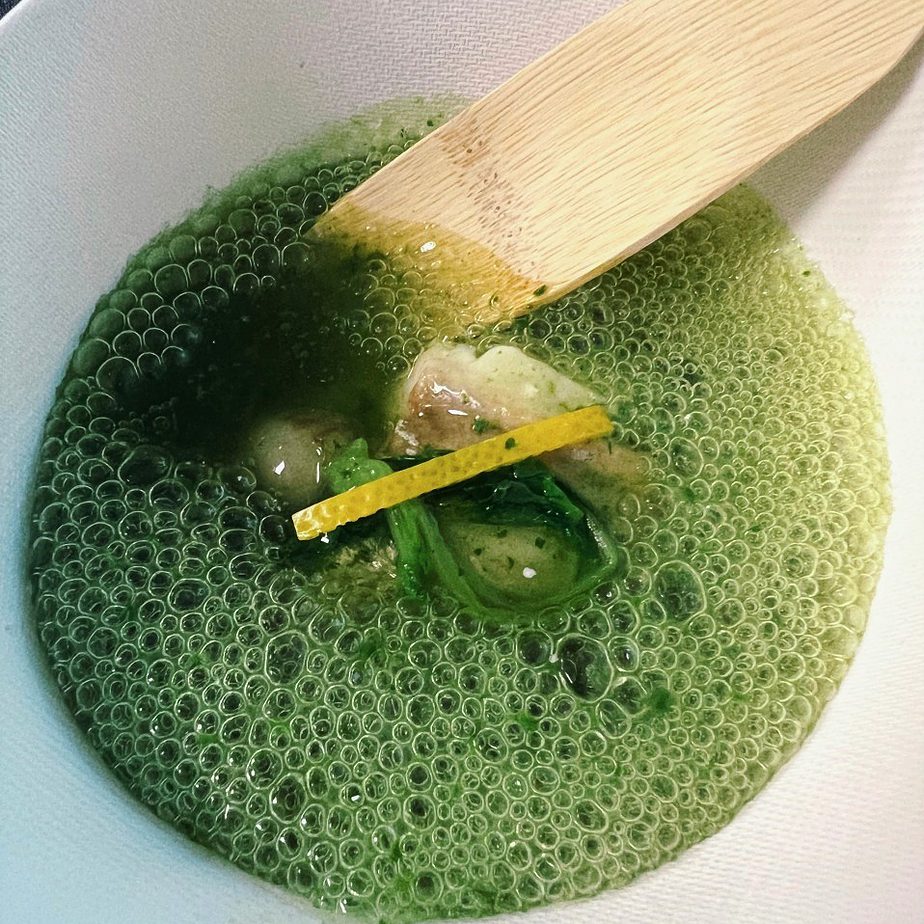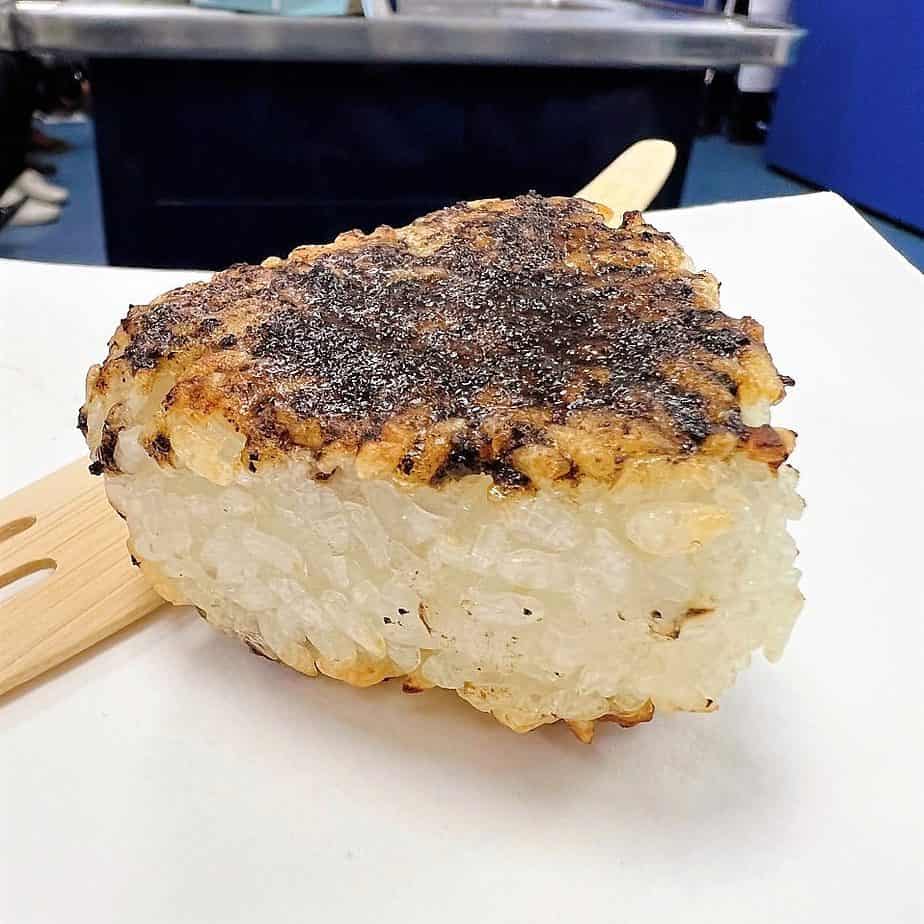Earlier this month, we joined the head chefs of top London restaurants and hotels, as well as industry experts, for a lecture on Japanese rice. In this article, we’ll be introducing what we learned including why Japanese rice is consistently high-quality, how rice forms the basis of Japanese cuisine, and how you can distinguish the quality of Japanese rice using the official ranking system. We’ll also provide details of the dishes that were presented during the two cooking demonstrations from Daisuke Hayashi, Chef-Owner of Japanese Kaiseki restaurant Roketsu, and Francesco Mazzei, Chef Patron at Sartoria.

In the following section, we’ll provide the highlights of Hayashi-san’s lecture which began with a background into Japanese food culture, including geographical features. We’ve added in a few additional observations of our own to supplement the translation into English which we hope will be helpful. For those wanting to focus solely on Japanese rice quality and the types of Japanese rice, please feel free to jump to section two to three. If you’re searching how to wash Japanese rice, we cover this in section five, while the cooking demonstrations by the Chefs start from section six.
How Japan’s geographical features affect its food culture
Hayashi-san started with the basics: Japan is a long and narrow country located at the end of the Eurasian peninsula. There’s a mountainous backbone which runs from north to south, and due to the rain falling on the mountains and then flowing the short distance to the sea, it results in the unique Japanese cuisine created with rich soft water. He even introduced that the Japanese Cuisine was called the “Cuisine of Water”.

Hayashi-san also explained details of the 3000 years’ long history of rice. The two main types of Japanese rice being short-grain white rice ‘Uruchimai’ that you use to make everyday Japanese dishes and ‘Mochigome’ rice which is sweet and sticky rice that we use to make mochi rice cakes or traditional sweets.

Japanese rice quality
Next Hayashi san talked about a strict criterion for how you grade your rice based on the main components of rice – namely the content of starch, moisture, protein, lipids, and minerals. When these are all in balance and a certain level of categories hit, the rice is considered to be good.

How you can check the quality of Japanese rice

Many people know of the ranking system for Japanese Wagyu and that you can get grades A5 and A4, but did you know that there is a ranking system for Japanese rice? This traditional ranking system has been carried out by the Japan Grain Inspection Association every year since 1971. The ranking is based on an evaluation of each varietal of rice compared to the standard base rice, which is a blend of Koshihikari from multiple production areas. If you are not familiar with Koshihikari, it is the most grown and consumed rice varietal in Japan, and prized as a premium rice outside of Japan.
20 Experts selected by the Associate make the annual evaluation. They score each rice varietal on the following criterion:
- Appearance
- Aroma
- Taste
- Stickiness
- Hardness
- Overall Quality
The rice can then receive a ranking. If the rice varietal is thought to be the same quality as the base rice, it receives the A’ grade. If it is better than the base rice, it is given the rank of A, and if it is significantly above the standard base rice, it is bestowed the “Special A” rank. Meanwhile, rice that is judged to be lower than the reference rice is given a B grade, and more inferior rice is marked down as B’. This table below shows the evaluation results for the last two years.
| Ranking / Year | Special A | A | A’ | B | B’ | Total |
| 2022 | 42 | 88 | 22 | 0 | 0 | 152 |
| 2021 | 53 | 77 | 24 | 0 | 0 | 154 |
If you want to see the latest rice ranking of the varietals of each prefecture of Japan, here is an English version of the complete Japanese Rice Ranking table for 2022.
Rice forms the basis of Japanese cuisine
Hayashi-san also explained that the 3 basic ingredients of Washoku (Japanese Cuisine) such as Japanese sake, miso and soy sauce were all made from rice.
How to wash and cook Japanese rice
- First add a small amount of water, with the aim of quickly rinsing the rice to remove any tiny particles, before discarding this water straightaway.
- Then add 5-10 times the amount of water as rice and swirl 10 times, before draining off the water. Repeat 3 times and remember to gently stir the rice. If possible use soft water.
- Soak in water for 30 minutes using the same amount of water as the rice.
- Heat the rice over high heat until it comes to a boil.
- After it comes to a boil, turn down the heat and simmer.
- Make sure the rice is covered and steamed after the water has boiled away for about ten minutes.
- Finally gently mix the rice and it’s ready to serve!
Cooking demonstration with Chef Hayashi
After the lecture was over, Hayashi-san moved into the first of the cooking demonstrations where he provided explanations of each dish that was served and how to make them. We started with a bowl of steamed rice made in a traditional crystal pot. As you may notice from the photo below, Hayashi-san pointed out that each grain was fluffy and had a firm form while yielding that sweet characteristic flavour.

Puffed Japanese Rice Cracker

Hayashi-san explained the steamed rice we had just eaten was rolled out, dried, and deep-fried to make the puffed rice cracker you see above. On top of the cracker was placed a tomato and monkfish on one side, with a spider crab on the other. As there were many restaurant owners in the audience, Hayashi-san pointed out these crackers can make an excellent canape. If this photo does not look amazing, we apologise as the light was not great. You’ll have to trust us it looked and tasted first-class.
Salmon Yasohachini

Before going into the dish itself, Hayashi-san talked about the dish name, as the Kanji characters of Yasohachi make the Kanji character of rice. Salmon fillet made with rice and flavouring from Konbu, dashi, sake, and a slight dash of light soy sauce. What Hayashi-san wanted to really highlight here is that traditionally, sugar and mirin was not used in Japanese cooking unlike many recipes today. Instead, the natural sweetness and viscosity of the rice was able to shine through with natural umami coming from the sake and salmon. Personal note that this was a real treat and appreciated the careful and colourful plating, too.
Steamed Seabass in chrysanthemum leaf sauce

Next was the seabass fillet stuffed with sticky rice. This was one of the more complex dishes of the demonstration that used two of the 5 main techniques of Japanese cooking – simmering and steaming. Incidentally, the remaining 3 techniques are cutting, grilling, and frying. The rice itself was made of a dumpling created with a filling of ginkgo nuts, lily bulbs, and Shiitake mushrooms. The seabass was then wrapped around the rice dumpling and steamed for 15 minutes. During this time, you make your Chrysanthemum leaf sauce which uses Chrysanthemum leaf paste, dashi, soy sauce, and Kuzu root starch. For many, this elegant dish was the favourite of the day. The Chrysanthemum leaf sauce was delicious with a slightly frothy and thickened texture, and paired well with the sticky rice dumpling and flavourful seabass.
Toasted rice ball with Truffle

The last dish was Yaki Onigiri. Most of the audience probably have already tried these delightful rice balls before, but in case they hadn’t, Hayashi-san explained they are cooked using another of the 5 Japanese cooking techniques – grilling. In Japan, usually Onigiri are made with soy sauce or miso, but as this is the UK, Hayashi-san decided to use Truffle paste mixed with soy sauce for the main flavouring. The cooking method is simply grilling the onigiri while applying and re-applying the truffle-soy mixture. We found this Onigiri had a crispy outside infused with the aroma and subtle taste of the truffle and soy mixture.
Cooking Demonstration with Chef Mazzei
Chef Mazzei started by talking about how rice is used in Italian cooking. The first thing that came to his mind is that a food many babies eat in Italy is rice Semolina. He then explained that in his own restaurant, he uses rice flour when making Gnocchi or Fettuccine. By coating them with rice flour, it preserves the ingredients by preventing humidity affecting it. Without the rice flour, these ingredients would become watery and collapse. The other great thing about it is that you can taste rice flour. However, the rice flour has to be of very high quality.

Japanese Rice Flour and Potato Gnocchi
In today’s demonstration, Chef Mazzei explained that he chose the Gnocchi dish as it is simple and something that the audience could easily replicate. It’s rice flour and potato Gnocchi with tomato, basil, and Grana Padano.
Some tips when making the Gnocchi are to use red potatoes with the skin on and to add salt. This is so the potato does not absorb water or breaks. You can add saffron too which creates this beautiful yellow colour. Also, Gnocchi is not like other pasta: it doesn’t need to rest when you make it and you can use it straightaway but putting it in the fridge will make it firmer. Meanwhile, you can make the tomato sauce which will take about an hour to cook.
When it came to the Gnocchi dish itself, it was as we had been told, an interesting taste. Mainly because the Gnocchi was softer than what we were used to, as the ratio of potato to rice flour was quite high. So it was almost like a different type of dish for those in the audience not used to hand-made Gnocchi, but something we enjoyed and would like to try again.

Q&A time with Chef Francesco Mazzei
After the demonstration, Chef Mazzei took a few questions. One was about how rice flour changes the Gnocchi, and he explained that it makes the taste pillowy and that it takes much less time to make Gnocchi with it than other flour. Another was what type of Italian rice does he use for dishes? Chef Mazzei said that if he was making Grana Padano risotto, he would definitely use a Canaroli, and if it was seafood risotto, his favourite choice would be Vialone Nano. If it was soup, it would be an Arborio one, and when it comes to brands he recommended Acquerello which is the one he uses across his restaurants. It’s reliable but of course very different from Japanese rice as it is very rich and has gluten starch so good for risotto but not for Japanese style dishes.
One more question asked was who is your greatest Italian chef of all time? Here, Chef Mazzei modestly said he doesn’t do anything special with his cooking but he thought Angelo Paracucchi was the best Italian chef ever because he was cooking the original Italian cuisine that people still don’t even know about. (If you are like us and didn’t know Angelo Paracucchi, he is one of the fathers of modern Italian gastronomy).
How Chef Hayashi and Chef Mazzei met

Right before the close of questions, we asked one on how the chefs know each other and to what extent. Here Chef Mazzei explained that Chef Hayashi was working with a good friend Alan Yao at a Japanese restaurant called Sake no Hana. Chef Mazzei used to be a consultant for Alan and then saw Chef Hayashi working there and noticed how he was really precise. He then discovered that Chef Hayashi was a protege of Chef Yoshihiro Murata who is the god of Kaiseki cooking. Chef Mazzei went on to explain that Murata-san even taught Heston Blumenthal Japanese knife techniques. Then when Murata-san was in London, he used to visit L’Anima with Hayashi-san where Chef Mazzei worked and he used to eat his Tortellini Brodo. After, they stayed close and Chef Mazzei visited Tokimeite when Hayashi-san started working there, and now they’ve been friends for almost 15 years.
What water brand is closest to Japanese soft water?

This is one question asked to Chef Hayashi and Chef Mazzei after the event that we thought would be useful to add here. The answer was that using filtered water when cooking Italian food should be adequate. However, with Japanese cuisine, water is extremely important when cooking. If possible, try to use a brand like Volvic which has the same softness as the water in Kyoto. A follow-up question was what about Evian? The answer given was that Evian is not soft enough for cooking Japanese dishes with.
Profile of Chef Daisuke Hayashi

Chef-owner of Roketsu Restaurant Japanese cuisine Goodwill ambassador
Chef Daisuke has been awarded The Minister’s Award for Overseas Promotion of Japanese Food from The Government of Japan recently. The prestigious award is one of the most highly regarded for people promoting Japanese culture overseas. He has been trained at Kikunoi in Kyoto prefecture, and his proven cooking techniques have been appreciated by many customers. His cuisine is based on dashi and the flavours of the seasonal ingredients themselves. Hayashi is one of the only masters of the Kaiseki tradition globally and the first to bring this spectacular and lesser-known form of Japanese dining to London at Roketsu which opened in December 2021.
Profile of Chef Francesco Mazzei

Chef Patron at Sartoria Author of Mezzogiorno: Southern Italian
Born in Calabria, Francesco grew up with a deep understanding and love of Italy’s exceptional culture and food. After attending catering college, he has since worked globally at a number of prestigious institutions, including The Dorchester in Mayfair and Michelin-starred La Terrazzo dell’ Eden in Rome. In 2008, Francesco opened award-winning restaurant L’Anima in the City of London, championing Calabrian, Puglian, Sicilian, and Sardinian dishes. In 2015, he joined D&D’s restaurant Sartoria in Mayfair as chef patron, and released his first cookbook, Mezzogiorno: Southern Italian cooking. More recently, Francesco has made appearances in a number of television programmes, and was appointed ‘Master of Taste’ for the 2016 edition of House of Peroni. In 2019 the President Sergio Mattarella awarded him the OMRI (Order of Merit of the Italian Republic).
We hope that this article was helpful to gain a better understanding of Japanese rice and why it’s so healthy and high quality. For additional online resources to learn further, we would recommend checking the huge wealth of information on Japanese food and regional recipes available on the website of MAFF (The Ministry of Agriculture, Forestry and Fisheries of Japan), who explore regional flavours in their Savor Japan section. At this stage, we’d also like to thank MAFF, JFOODO, JNTO, Enshu Events, and of course both Chef Hayashi and Chef Mazzei for this incredible opportunity and fantastic experience.
If you’re looking for more recipes using Japanese rice on our website, take a look at this Gyudon rice recipe. We’ll also be aiming to include both chef’s recipes from this event in the near future., although we’d suggest taking a look at Chef Mazzei’s fantastic selection of recipes on his website. Alternatively, if you’d like to know more about Japanese sake and how its made from rice, here’s a link to our comprehensive guide to Japanese sake.

